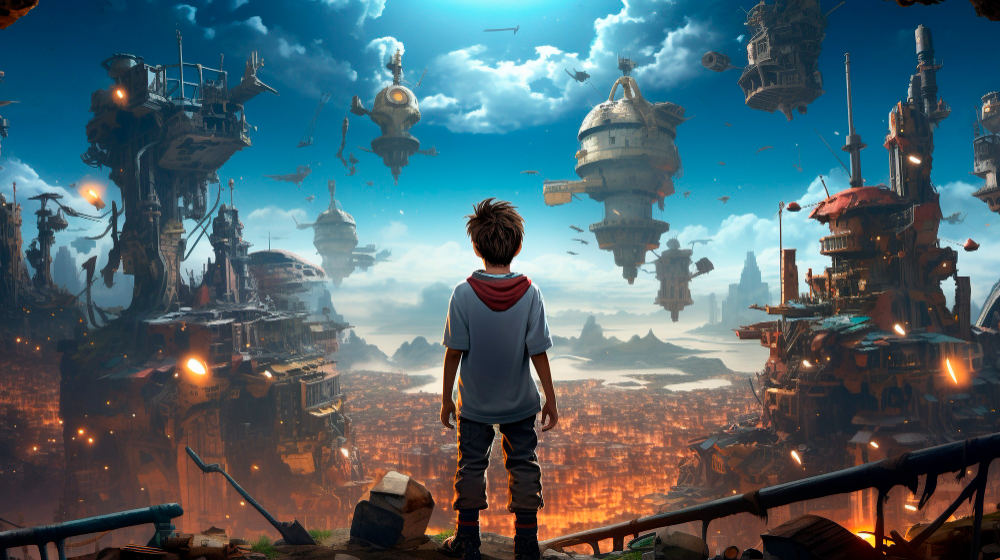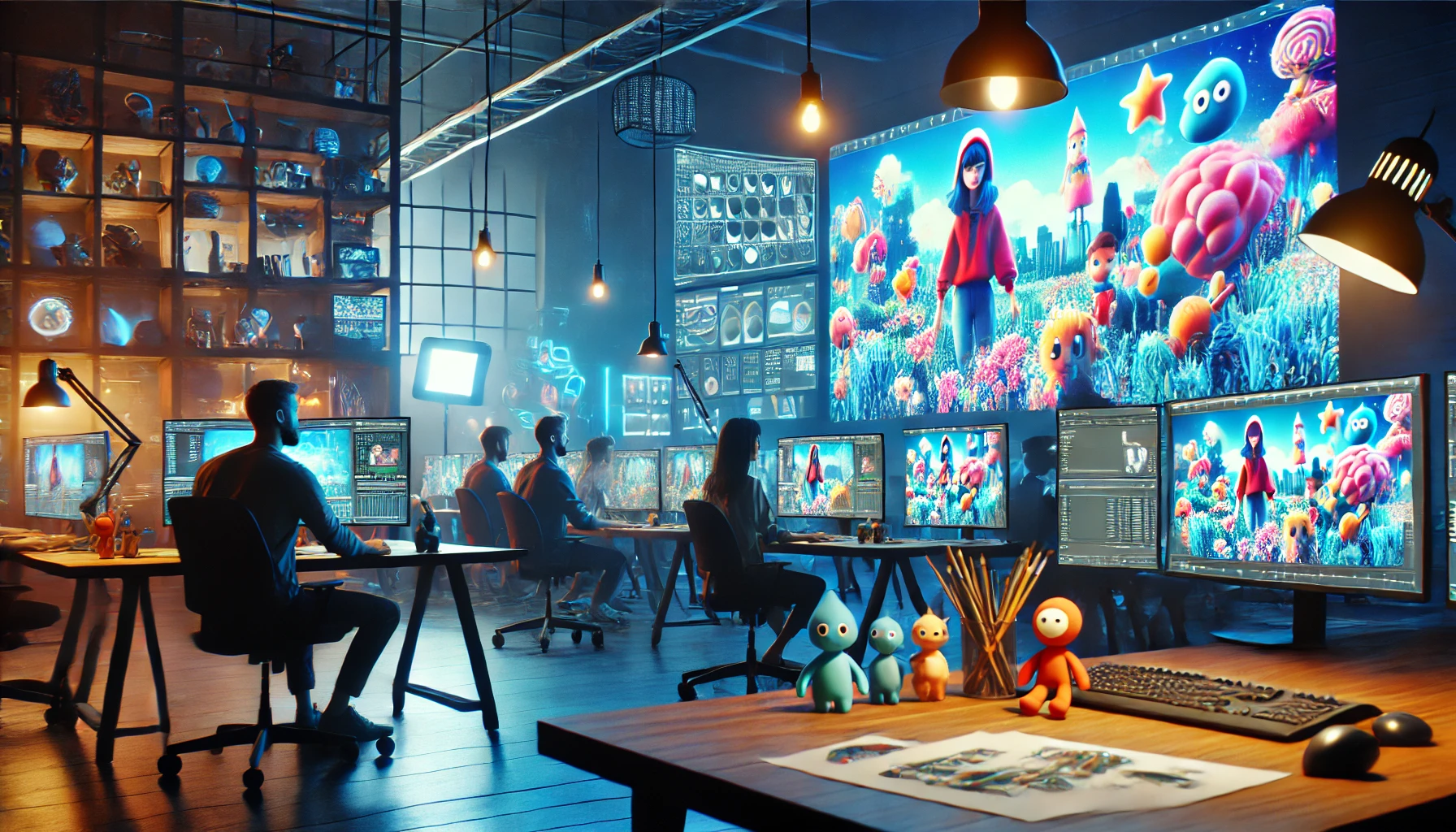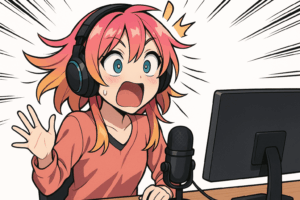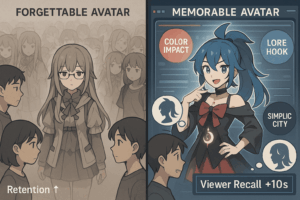The creation of an animated movie is an intricate and multi-layered process that combines creativity, technology, and teamwork. Whether it’s a project for a captivating animated film like Toy Story or a short film made by independent artists, every animated project involves several phases that require a great deal of effort, time, and collaboration. From conceptualizing the idea to the final step of post-production, all the elements of animation come together to create a seamless and immersive experience for the audience.
In this blog, we will explore how animators make an animated movie, delving into each phase of the animation process, including development, pre-production, production, and post-production. Along the way, we’ll discuss the principles of animation, the role of sound design and visual effects, and how all the elements contribute to creating a stunning and engaging animated film.
1. The Pre-Production Phase: Laying the Foundation of Animated short film
The pre-production phase is the first and most critical part of production process of making an animated film. During this stage, the groundwork for the entire project is laid. This includes developing the story, creating concept art, writing the script, and assembling a team. It is a time of planning, brainstorming, and creative exploration.
Story Development and Script Writing
The journey begins with an idea, usually an idea sparked by the filmmakers’ creativity or an inspired concept. The script, or screenplay, is the blueprint for the entire film. It outlines the dialogue, character actions, and the plot progression. For a successful animated movie, a well-written script is essential to ensure the story resonates with the audience. This may take time and go through several iterations before we finalize it.
Concept Art and Storyboarding
Once the script is in place, concept artists and storyboard artists begin their work. . Concept art artists create reference images to establish the look and feel of the film. These reference images explore the visual style, character designs, and settings. Storyboarding, on the other hand, involves sketching the major scenes in sequence. This helps visualize how the film will unfold and allows for adjustments before the full production process begins.
2. Asset Creation: Bringing Ideas to Life of an Animated Film
Once the story and visuals for whole movie are outlined, the asset creation phase begins. This involves designing all the characters, backgrounds, props, and other visual elements that will be used in the film. Character design is a crucial part of the process, as the appearance and personality of each character must align with the story and tone of the film.
Models and Textures
The creation of 3D models or 2D illustrations (depending on the style of animation) is done in this phase pre production. For 3D animation, the character models are created digitally using specialized software. Texturing follows, where artists apply colors, patterns, and materials to make characters and objects look realistic or stylized. This process is essential for setting the tone of the animation.
Reference Materials and Lighting Design
To create realistic effects and depth in the animation, animators use reference materials such as photographs individual drawings or videos. Lighting design also plays a significant role, as it helps create mood and atmosphere within each scene. By adding depth and choosing the right lighting, animators can create a more dynamic and visually engaging film.
3. The Animation Process: Bringing Characters to Life
Animation is the heart of an animated movie. It’s where the story truly begins to come to life. Whether it’s hand-drawn 2D animation or 3D computer-generated imagery (CGI), animators use a variety of techniques to create movement and expression.
Key Poses and In-Betweening
The first step in animation is creating key poses. These are the defining moments of a character’s movement. Once the key poses are set, animators create the frames between them to ensure smooth transitions. Furthermore, this process can take a significant amount of time, as each frame must be meticulously crafted to produce lifelike or stylized movements.
Animation Principles
The animation principles guide animators in making characters and movements feel realistic. These principles, such as squash and stretch, anticipation, and follow-through, help in creating natural and believable motion. Understanding these principles is crucial in making animated characters feel alive and engaging.
4. Production: The Heart of the Animation Process
The production process is where all other elements of the work from pre-production and asset creation comes together. This phase includes animating the characters, adding special effects, and setting up the scenes.
Scene Layout and Composition
Scene layout is the arrangement of all the visual elements in a particular shot. This includes positioning characters, backgrounds, and props to create a visually appealing composition. It also includes camera angles and movements to enhance the storytelling.
Animation and Rendering
The actual animation happens during the production phase. Using advanced software, animators create and render individual frames, making the characters and environments in live action footage come to life. Rendering is the process of converting 3D models into 2D images that can be edited and displayed on screen. The more detailed the animation, the more intensive the rendering process can be.
5. The Role of Sound in Animated Movies
In any animated movie, sound plays an essential role in creating atmosphere. It also enhances the audience’s emotional connection to the story.
Sound Design and Sound Effects
Sound designers create and combine sound effects to correspond with on-screen events. They carefully craft every noise, from footsteps to environmental sounds, to immerse the audience in the film’s world. Animated movies also require sound effects that enhance movements, such as the whoosh of a character jumping or the rumble of a character’s footsteps.
Dialogue and Voice Acting
Voice actors are essential for bringing the characters to life animated short film. Whether it’s an animated short film or a feature-length animated film, the voice performances play a huge role in conveying emotions and personality. The team records the dialogue in the post-production phase and synchronizes it with the animation to ensure that the voice matches the character’s movements.
6. Visual Effects and Lighting Effects with all the Elements
Visual effects (VFX) and lighting effects contribute significantly to the aesthetic of an animated movie. Lighting affects the mood of a scene, while VFX are used to enhance special moments, like magical transformations or explosions.
Creating Depth and Realism
Lighting is essential in creating depth, adding texture, and enhancing the visual appeal of each shot. Whether it’s soft ambient lighting or dramatic shadows, lighting plays a pivotal role in crafting the atmosphere of the scene. Visual effects are often used to add lighting to create otherworldly effects or bring inanimate objects to life, enhancing the animation‘s overall impact.
Color Correction
Color correction is the final step in refining the film’s look. It ensures that all colors are balanced and consistent across scenes, which is essential for maintaining visual continuity throughout the film.
7. The Post-Production Phase: Fine-Tuning the Movie
Post-production is the final step in the filmmaking process, where everything comes together to create the finished film. This phase of filmmaking process involves editing, adding sound effects, refining visuals, and ensuring that all aspects of the film align perfectly.
Editing and Sound Editing
In post-production, editors work with the raw footage, trimming scenes, and adjusting the timing to ensure the short film flows smoothly. Sound editing involves syncing the dialogue, sound effects, and music with the animation. This step is crucial in making sure that the audience experiences a cohesive and polished final product.
Final Rendering and Quality Check
The final step of post-production is rendering the film in its entirety. This includes a thorough quality check to ensure there are no inconsistencies in the visuals, sound, or animation. Once the team polishes and perfects everything, they prepare the film for distribution and screening at film festivals or theatres.
8. The Importance of Animation Principles in Animated Movies
One of the keys to making an animated movie that captivates audiences is adhering to the animation principles. These principles, developed by Disney animators in the 1930s, are the foundation of modern animation.
Principles to Follow
- Squash and Stretch: Adds weight and flexibility to characters and objects.
- Anticipation: Prepares the audience for an action by showing subtle cues.
- Follow-through: Ensures movements are complete, adding realism.
- Appeal: Characters should have charisma and personality to engage the audience.
Animators apply these principles throughout the entire production process to make the movements more fluid and engaging.

9. The Role of the Animator: A Team Effort
Creating an animated film is not a one-person job. It requires large teams of animators, sound engineers, visual effects artists, and production assistants. The animator’s role is to bring the story, characters and scenes to life, working closely with other team members to achieve the final product.
Collaborative Efforts
The success of an animated film depends on the collaboration between different departments, from animators to concept artists to voice actors. A unified team ensures that all the elements—sound, visuals, storyboard, and animation—work together to create the best experience for the audience.
10. From Concept to Screen – The Journey of an Animated Movie
Creating an animated movie is a complex and rewarding process. From pre-production to post-production, every step involves a careful balance of creativity, technical expertise, and teamwork. Learning how to make an animated movie helps you appreciate the immense work behind creating captivating films. If you want to create your own animated models, 3DAiLY provides a fantastic platform for designing 3D models and animations. Start your animation journey today and bring your creative ideas to life!



